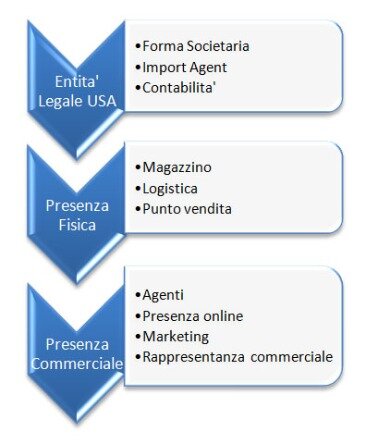Contents:


And, even more to the point, arming your trading toolkit with a range of complex exit strategies is key to your longevity and becoming a successful trader. If you’re going to realise the positive expectancy of your trading system, you need to trade the system, which includes your exits, as per your system rules. Modern markets require an additional step in effective stop placement. Algorithms now routinely target common stop-loss levels, shaking out retail players, and then jumping back across support or resistance. This requires that stops be placed away from the numbers that say you’re wrong and need to get out.
You’ll be able to ride the wave of an upturn and cash out at a profit, no matter what. Of course, the limits you set should make sense, and you should use them in combination with stop-loss limits to maximize their potential. If you have a stock that’s only grown incrementally since you’ve owned it, at the very least set a deadline to re-examine whether it’s worth holding onto. It may still be worth selling just to keep your portfolio liquid and free up capital for new opportunities.
Maximizing your option-selling returns.
Stop-losses, or «stops,» are instructions you can give to your broker to sell equities automatically at a certain point, or price. When this price is reached, the stop-loss will immediately be converted into a straight market order and sell. These can be helpful in minimizing losses if the market moves quickly against you. As well, if you are an active trader but have a full-time job, it behooves you to use this type of order for when you are away from the markets. For example, if your plan is to get listed on the stock market , it is important that your company follow certain accounting regulations.
Technically speaking, trend is your friend — Manila Bulletin
Technically speaking, trend is your friend.
Posted: Tue, 11 Apr 2023 10:52:24 GMT [source]
In essence, it’s about letting profits run or altering profit targets, based on current market conditions and what your analysis suggests is likely in the near future. However, make sure to identify your objectives before placing an order. You could short the Eurodollar, and some news hits the market, and it spikes down in your favour for three consecutive periods.
What is an Exit Strategy?
(Keep in mind that long-term capital gains tax is typically more favorable.) Your risk tolerance and retirement timeline will likely come into play when deciding how long to keep an investment. Finding the best entry point can take many hours and traders can sometimes put too much focus into it and end up taking bad exits. We’ve put together a list of some of the most commonly used exit trading strategies to help traders come up with a fully crafted plan. Larger positions benefit from a tiered exit strategy, exiting one-third at 75% of the distance between risk and reward targets and the second third at the target.
They might be hungry to buy to keep their competitors from getting the technology, but each of them only controls a fraction of the market. The value of your company is much greater than an individual manufacturer can justify paying — it could apply to the whole market, and yet a 20% market share holder cannot pay for the full market. Sometimes there are many types of buyers and it takes some thought to figure out which might be the one best-positioned to pay top dollar for your startup.
https://trading-market.org/es and investors should have a clearly defined exit plan to minimize potential losses and maximize profits on their investments. Here are several specific reasons why it’s important to have an exit plan. If the business is not successful, an exit strategy enables the owner to limit losses. An exit strategy may also be used by an investor, such as a venture capitalist, to prepare for a cash-out of an investment. An exit strategy is a business owner’s strategic plan to sell ownership in a company to investors or another company.
At least for passive investors, it doesn’t make sense to give up on a stock the second it dips into the red. Or it may be going through some industry shakeups that the company will eventually work through. It could even be a seasonal issue — a company that sells winter coats may find its stock flatlining or dipping in June but heading back up in November.
This enhances the possibility of future borrowing on more favorable terms because of an improved debt-to-equity ratio. The risks of loss from investing in CFDs can be substantial and the value of your investments may fluctuate. 75% of retail client accounts lose money when trading CFDs, with this investment provider. CFDs are complex instruments and come with a high risk of losing money rapidly due to leverage. You should consider whether you understand how this product works, and whether you can afford to take the high risk of losing your money.
Often, companies might be caught in multi-year down cycles due to sectoral headwinds and various macroeconomic events. Financial experts have observed that some market disruptions are strong enough to reduce profit margins. Early investors, promoters, and other insiders have a lock-in period, which prevents them from selling off their stakes immediately after listing. Once this time frame is over, insider selling may have a negative impact on stock prices. One thing is to consider the tax implications of any short-term vs long-term capital gains you will incur once you sell a position. If trading in a tax-sheltered account such as an individual retirement account , this isn’t applicable since gains are protected if kept under their defined provisions.
Moreover, these days, anchor investors have a lock-in period from the date of allotment. Retail investors may not have the ability to handle the price volatility which comes with massive sell-offs by large institutions. That is why they need to have an IPO exit strategy to avoid massive losses. Your exit strategy may evolve as circumstances change for you and the market. This is one of the strongest exit strategies for business owners, as they can maintain control over price negotiations and set their own terms. If you are selling to a competitor or entertaining multiple bids, you may be able to drive the price up even further.
Q: How do you determine who the likely buyers are and why they would buy the company?
A bank-owned home, or real estate owned , is a property sold by a lending institution, such as a bank. When a property has been foreclosed upon, the financing entity will seize it back into its possession and sell it under market value to a new buyer. Because it is expensive for banks to hold and maintain these properties, it is best to sell them as soon as possible. To do so, they will typically remove any outstanding liens and debts from the property. Bank-owned homes are sold through real estate auctions or are otherwise sold through the lender’s special REO listing website. Learning how to navigate the real estate auction process is, while not your standard exit strategy, learning how to navigate real estate auctions can result in some great deals.
Above is an example of a stop-loss, trailing stop and partial take-profit order combined, where the stop-loss is set at a loss of 2% of capital. A take-profit order is used to specify the exact CFD price at which to close a profitable position. Like a stop-loss, a take profit converts into a market order when triggered. This type of order is designed to cap losses by leaving a trade and collect profit as long as the price moves in a favourable direction. 84% of retail investor accounts lose money when trading CFDs with this provider.
Opinions and projections contained in this publication are our own as of the date hereof and are subject to change without notice. This publication and all the information, opinions and conclusions contained herein are protected by copyright. This publication may not be reproduced in whole or in part without the prior express consent of Scotia iTRADE. The term exit strategy refers to a process by which an owner plans to withdraw their investment in a business. Exit strategies are important to venture capitalists, since extracting their money from a business allows them to reinvest those funds elsewhere. Longer-term investors would choose the higher end, multiply by 3, to get a value further away from the current market price.
Instead of setting a price below your initial level of investment, you aim for a target price above the chosen price to maximize profits. If the current price of a share is higher than its 100-day moving average, they’ll set a point just below the moving average where they want to sell it. This is practical because it prevents sudden, temporary stock movements from influencing your stop-loss limits. But passive investors, in general, pay far less attention to stock exit strategies. They tend toward “buy and hold” commodities that they expect to turn profits over long periods of time.
Exit Strategy (Cashing Out an Investment)
You decide to open a short position, selling Brent crude and place a stop-entry order at $60.00. Two hours later, and the market reaches this level, so your broker executes your stop and closes your position. Stop-losses can help you manage your risk in a quickly moving market, by essentially pulling the plug on your trade if you lose a certain amount of money. The danger of stop-losses is that they can be subject to slippage – which is the market moves in the time it takes your broker to execute the order. By having an understanding of what exit you’re going to make, you’ll be able to minimise your risks and have a higher chance of locking in profits.
If you’re a day trader or swing trader, you’ll have much narrower, specific criteria. If you’re a long-term or buy-and-hold investor, your exit strategy may be more generalized. Ideally, an entrepreneur will develop an exit strategy in their initial business plan before launching the business. The choice of exit plan will influence business development decisions. Common types of exit strategies include IPOs, strategic acquisitions, and management buyouts .
- Then look for the next obvious barrier, staying positioned as long as it doesn’t violate your holding period.
- When it comes to live trading, many traders implement a time stop that closes their position if there has been consolidation in a tight range over X number of sessions.
- Trend analysis is a technique used in technical analysis that attempts to predict future stock price movements based on recently observed trend data.
- They will know the ins and outs and be able to better prepare you for the process.
Depending on investors’ demand and market outlook, prices may either rise or fall. But if you’re actively trading and looking to swing some decent profits in the short to mid-term future, having a clear exit strategy is especially important. The family succession exit is the idea of keeping a profitable business ‘in the family’. It’s worth noting that business exit planning for a family succession is no less important than any other type of exit.
Stock buybacks
A stock exit strategy is a pre-planned set of conditions for exiting a position based on one’s investment goal. Investors, such as venture capitalists or angel investors, need an exit plan to reduce or eliminate exposure to underperforming investments so they can capitalize on other opportunities. A well-thought-out exit strategy also provides guidance on when to book profits on unrealized gains. However, instead of selling the renovated property, an investor chooses to rent it out to receive monthly cash flow.
The Eley Griffiths guide to investing in ASX small cap stocks — TradingView
The Eley Griffiths guide to investing in ASX small cap stocks.
Posted: Mon, 17 Apr 2023 05:34:00 GMT [source]
The CD-ROM also contains a Learning Interactions Library, enabling students to test their knowledge of this chapter in a “real-time” environment. Stay on top of upcoming market-moving events with our customisable economic calendar. Discover the range of markets and learn how they work — with IG Academy’s online course. Ultimately, an IPO is useful in industries where value is dependent on consumer perception as it allows companies to gain widespread visibility quickly with minimal risk and effort.
William O’Neil, the founder of best stock exit strategy’s Business Daily, has done lots of research on this topic and his recommendation is 8%. Revisit that order every month and if your stock has increased in price, adjust your stop loss order accordingly. A more dynamic strategy gaining a lot of attention lately is from a company called SmartStops.net, founded by Chuck Lebeau.

So maybe you need to go even broader still and you look at, say, telematics and electronics makers. So even though they serve the entire market across all manufacturers, none of them is really that big because there are so many different categories of product in the telematics and electronics market. Imagine a hypothetical supplier of cutting edge new technology to the trucking industry.
Alternatively, please contact IB Customer Service to receive a copy of the ODD. Before trading, clients must read the relevant risk disclosure statements on our Warnings and Disclosures page. Trading on margin is only for experienced investors with high risk tolerance. For additional information about rates on margin loans, please see Margin Loan Rates. Security futures involve a high degree of risk and are not suitable for all investors. Before trading security futures, read the Security Futures Risk Disclosure Statement.

If they don’t, their losses could be catastrophic the further the stock price deviates from the hypothesis. Conversely, if a long-term investor sells a stock after a couple of bad months, they lock in their losses. And these are losses that could turn into significant gains over the coming years. Seasoned investors will have a stock exit strategy ready, to ensure they’re making an informed, strategic sale.
